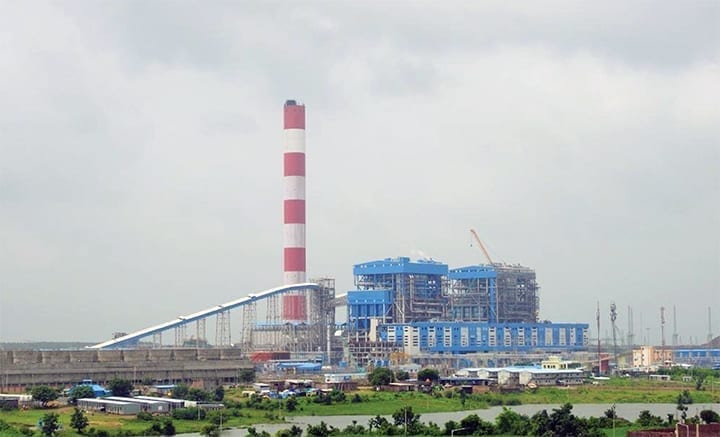India Expects to Double Power Consumption
The post India Expects to Double Power Consumption appeared first on POWER Magazine.

Global energy demand has waned in 2020 due to the coronavirus pandemic. The lingering impacts of COVID-19 are expected to continue into 2021, but energy industry experts predict the world's need for electricity will increase, with more access to power critical for a worldwide economic recovery.
Analysts who have spoken with POWER agree that certain countries will drive that increased demand for power, most notably India, where population growth and economic development could make that country responsible for about 11% of total global energy consumption in 2040, according to a recent BP report. Narendra Modi, India's prime minister, in late October said, India is set to nearly double its energy consumption over the long term." Modi's remarks came during the inaugural address at the India Energy Forum.
Modi said that analysts who predict that global demand for energy will drop over the next few years also expect demand across India will increase. He said the country's energy sector will be growth-centric, industry friendly and environment conscious... we are well on track to meet the commitment we made to the global community. India's Energy Plan aims to ensure energy justice. That too while fully following our global commitments for sustainable growth. This means more energy to improve the lives of Indians. But, with a smaller carbon footprint."
Government data released in early November showed that India's power consumption grew 13.38% in October this year compared to October 2019, driven mostly by an increase in industrial and commercial activities, and the easing of coronavirus pandemic lockdown restrictions. India's government had imposed nationwide lockdown restrictions on March 25, and power consumption immediately declined on a year-over-year basis for six consecutive months, including a whopping 23.2% drop in April. It ended that retreat in September, with growth of 4.6% compared to a year ago before the larger rebound in October.
Analysts expect the trend of increased power consumption will continue, and the BP report said India will account for more than a quarter of net global primary energy demand growth" until at least 2040. India's need for power means all fuel types are in play, even as the country tries to lessen its carbon emissions.
 |
1. India's state-run NTPC in 2019 commissioned the country's first ultrasupercritical coal-fired unit at the 1,320-MW Khargone plant in the state of Madhya Pradesh. Courtesy: NTPC |
The BP report said coal is expected to meet about 42% of the country's new energy demand (Figure 1), with more than 80% of that need met through domestic production. The report also said that while consumption of renewable energy is expected to increase by 1,500%, from ~20 Mtoe (million tonnes of oil equivalent) to ~300 Mtoe by 2040, mainly due to increases in solar power generation capacity, coal is still expected to supply a large majority of the country's power output by 2040. The country has said it plans to raise the share of natural gas in its energy mix to 15% by 2030 from the current 6.2%, and increase its renewable energy generation to 175 GW by 2022, and to 450 GW by 2030. The increased emphasis on renewables will make only a small impact on the country's overall power mix, though-IHS Markit during the India Energy Forum said, India's share of fossil fuels in the energy mix is expected to slightly decline from 76% in 2020 to 72% in 2050."
One area of renewables growth in India could be green hydrogen. The state-run Solar Energy Corp. of India (SECI) reportedly is seeking bids to set up green hydrogen production plants. Green hydrogen is produced through electrolysis from water by using electricity generated through non-greenhouse gas (GHG) producing energy sources including hydro, wind, and solar. Hydrogen also can be produced from natural gas, oil, or coal.
The Indian financial newspaper Mint in early November reported that NTPC Ltd., Indian Oil Corp., Acme Solar, and Greenko Group are among companies looking at the business opportunities afforded by hydrogen, particularly for transportation and storage uses. A government official who requested anonymity told the newspaper, Hydrogen is the cleanest source of energy. The work is going on for calling these bids, and an Expression of Interest [EoI] will be floated first. Given the large clean energy program we have, the plan is to set up these hydrogen production units by leveraging wind and solar power, as hydrogen production is a very energy intensive process."
Hydrogen plants could provide India with grid-scale storage solutions and also support development of renewable energy projects. The country today has about 35 GW of installed solar generation capacity, and 38 GW of wind power, according to government data. India has set targets of 100 GW of power from solar projects, and 60 GW from wind power, by March 2022. The government also is looking at the use of battery storage and hydrogen to power mass transportation vehicles in the country's cities, many of which today run on diesel.
-Darrell Proctor is associate editor for POWER (@POWERmagazine).
The post India Expects to Double Power Consumption appeared first on POWER Magazine.